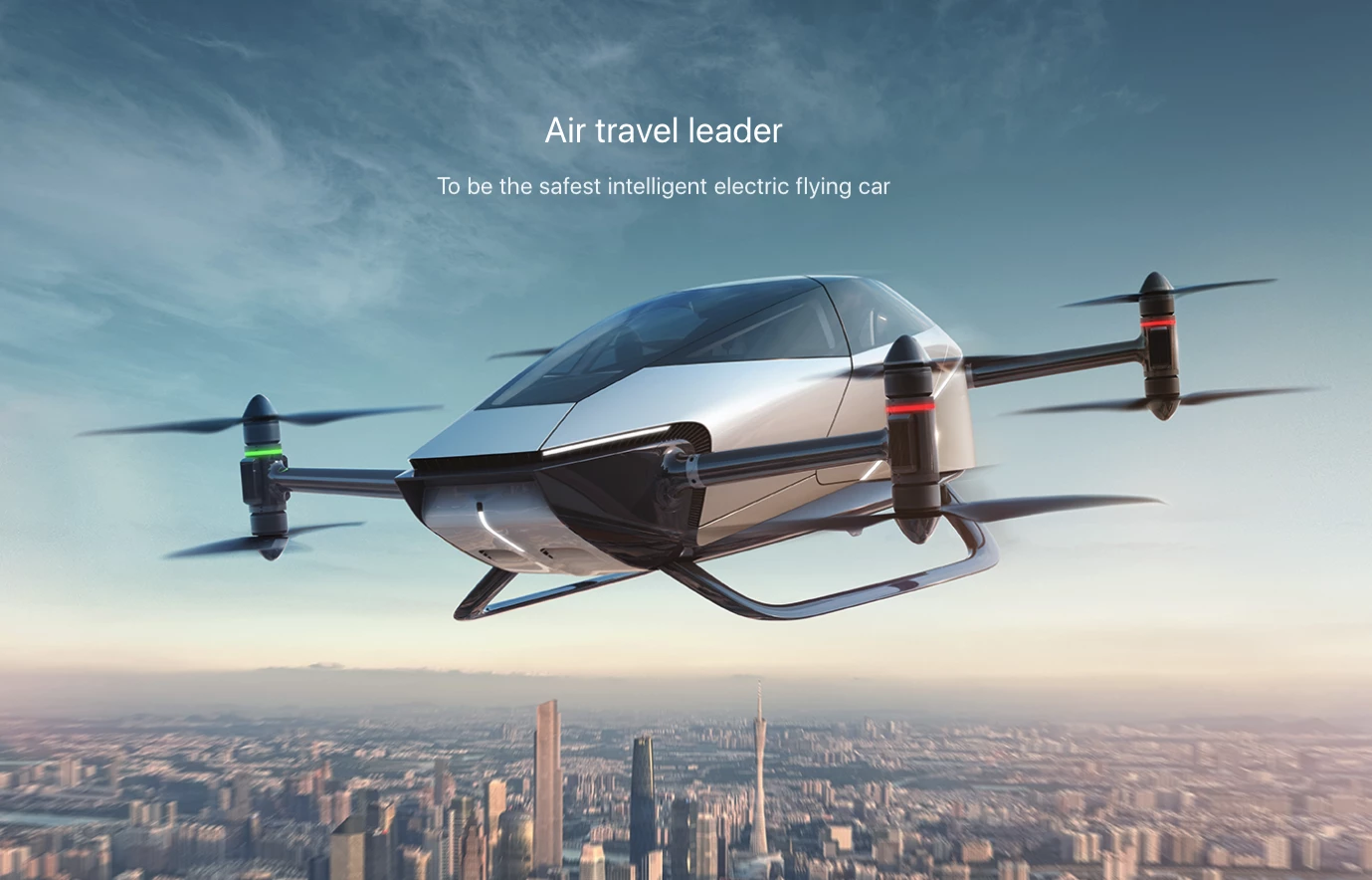XPeng affiliate HT Aero has unveiled an outrageous flying car design that it claims is "planned for roll-out in 2024." It looks like an electric Bugatti hypercar with a pair of huge, auto-folding props in the style of the Bell-Boeing V-22 Osprey.
Xpeng is a seven-year-old Chinese electric car company that's growing fast, pulling in somewhere around US$2 billion in revenue this year and shipping somewhere around 50,000 cars. It's investing heavily in autonomy and charging infrastructure, while rolling out cars like the P7 that offer more range than Tesla's Model 3, at a cheaper price.
It's also getting serious about urban air mobility. Last week, its "affiliate" eVTOL company HT Aero announced it had raised more than half a billion US dollars in a single funding round. According to the AAM Reality Index, this staggering figure would make HT the fifth best-funded eVTOL company in the world.
Large biscuits indeed – more than three times the cash eHang is allegedly working with. There must be some serious plans going on behind the scenes here, since HT's current fifth-gen X2 aircraft doesn't look all that impressive on paper. It's a very basic-looking eight-rotor coaxial quadcopter design that can carry two passengers at speeds up to 130 km/h (80 mph) for up to 35 minutes.

A decent start, but most companies on their fifth iteration would start looking at transitioning aircraft capable of flying further and faster with more people on board. Not HT Aero. "Our next-generation model," said Founder and President Deli Zhao as the funding was announced, "will be a fully integrated flying vehicle and automobile, designed for both low-altitude air travel and road driving. We are planning for an official roll-out in 2024."
An eVTOL flying car, then. And what a thing it looks like. This glass-domed electric beast will drop plenty of jaws even before it opens up its gull-winged tail compartment to fold out the two colossal rotors it purports to fly on. Remember those gorgeous future-sportscars Lexus designed for Minority Report back in the day? If one of those married a Bugatti Chiron, and a Dyson vacuum was the neighborhood milkman, the offspring might look something like this.

When it's time to take to the air, the props come out of the oversized tail at the touch of a button, then spin up and lift the car off the ground. Yes, this is a viable propulsion arrangement, as evidenced by the military Osprey aircraft, and with those two contra-rotating rotors able to tilt independently, you can achieve full control over pitch, roll and yaw.
Indeed, such large-diameter fans will deliver more efficient vertical lift than most small-rotor designs – which will be critical since there's no winged cruise mode to take a load off the props, and this thing will need to carry all the weight of an auto-folding eVTOL plus all the additional weight of a street-legal electric car.
And herein of course lies the problem. As our good buddy Dezso Molnar has vigorously argued, the fancier these kinds of machines get, the worse they work, the more expensive they become and the smaller the market becomes. This one looks very fancy indeed.
Let's not forget: electric street cars are already heavy. Tesla's Model 3 is around 300 kg (660 lb) heavier than, say, a Toyota Corolla sedan, because lithium batteries simply weigh a lot. That's OK, because cars don't need to lift themselves off the ground. The energy requirements for half-decent flight endurance in a vehicle like this will be pretty brutal; if HT's little manned multicopter will only fly for 35 minutes weighing in at just 560 kg (1,235 lb), then you're not going to be flying real far in something much larger and possibly four times the weight, with a road-going electric powertrain, braking, steering and suspension systems, airbags, crumple zones and everything else you need to certify a car for street use.

What's more, a two-rotor system gives you basically zero propulsion redundancy. Not that electric motors fail often, but the consequences here will be dire unless you're flying high enough for the built-in ballistic chute to do its thing. One shudders to think what the grueling dual car/eVTOL certification processes will cost, one wonders what kind of licensing will be required in order to fly it anywhere of practical use, one muses over whether there's more than 50 genuine buyers out there for this kind of thing, and one shudders again thinking how much it might cost.
Still, here we are. There's very little detail available at this stage, which perhaps bodes poorly for a 2024 rollout date. But HT Aero has half a billion dollars in the bank, and has announced that this is its next model. We sure can't argue that these renders don't look cool, although the pathway to production has brutalized many a concept drawing.
Indeed, don't get us wrong, we'd love to see these oversized monsters pulling off the highway, folding out like Swiss Army knives, wobbling their way off the ground and flying away into the sunset just as much as anyone else. It just seems like a completely bizarre business idea to throw 500 million bananas at. Time will tell.
Check out a video below.
Source: HT Aero









